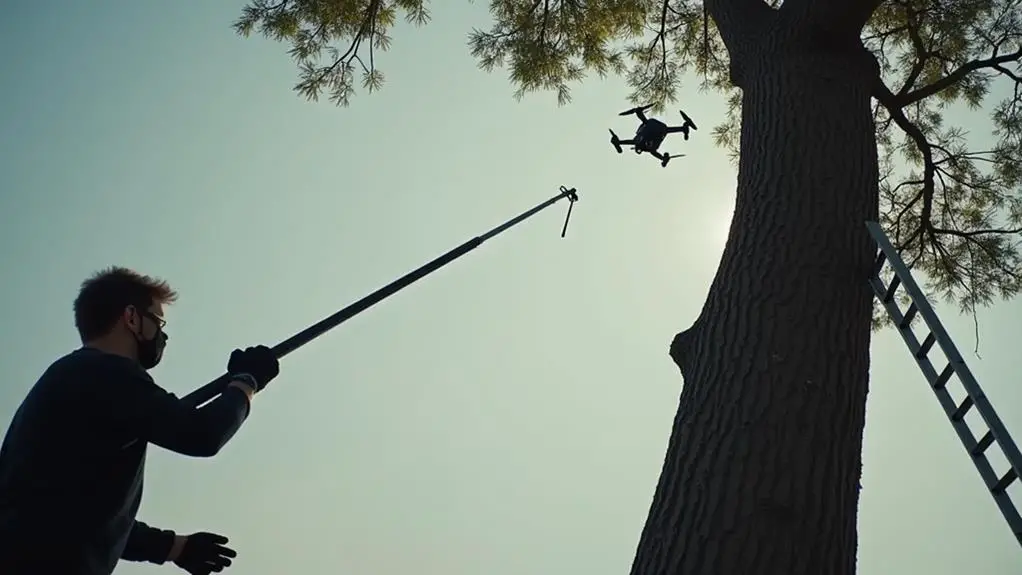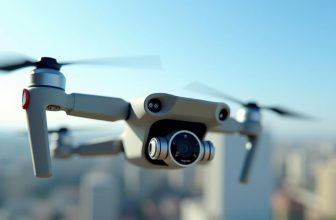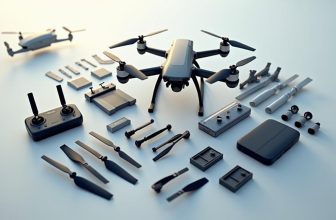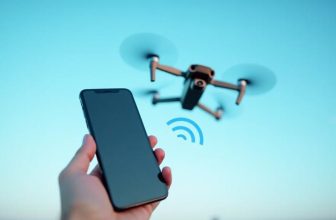
You're flying high, you're soaring free, but then disaster strikes – your drone gets stuck in a tree. Now you're facing a challenging task: retrieval. Before you start, take a step back and assess the situation. The tree's species, branch stability, and potential obstacles all play a vital role in determining the best course of action. But how do you actually get your drone out safely and efficiently? The answer lies in a careful, 5-step process that requires patience, the right tools, and a solid plan – one that we'll explore in more detail.
Contents
- 1 Key Takeaways
- 2 Assess the Situation and Tree
- 3 Gather Necessary Retrieval Tools
- 4 Create a Safe Retrieval Plan
- 5 Execute the Retrieval Process
- 6 Inspect and Test the Drone
- 7 Frequently Asked Questions
- 7.1 Can I Claim Drone Retrieval Costs on My Homeowner's Insurance?
- 7.2 How to Prevent Trees From Interfering With Drone Flights in the Future?
- 7.3 Are There Professional Services for Retrieving Stuck Drones?
- 7.4 Can I Sue My Neighbor if Their Tree Damages My Drone?
- 7.5 Do I Need a Ladder Certification to Retrieve a Drone From a Tree?
- 8 Conclusion
Key Takeaways
- Assess the tree and drone situation to determine the best retrieval strategy and necessary tools.
- Gather rope systems, tree hooks, pulleys, carabiners, gloves, and a first-aid kit for a safe retrieval.
- Create a safe retrieval plan, identifying potential hazards and developing safety protocols to mitigate risks.
- Execute the retrieval process carefully, following the planned steps and wearing proper gear, such as gloves and a harness.
- Inspect and test the drone after retrieval, checking for visible damage, loose components, and system errors or warnings.
Assess the Situation and Tree
When determining the best approach to retrieve your drone from a tree, step back and take stock of your situation along with the tree itself.
Observe the tree species, as this can substantially impact your retrieval strategy. Certain species, such as pine or fir, have softer branches that may break easily, while others, like oak or maple, have sturdier branches.
Next, evaluate the branch stability that's holding your drone. Look for any signs of weakness, such as cracks or splits, and check if the branch is swaying excessively in the wind.
Also, consider the angle and orientation of the branch in relation to the trunk and surrounding foliage.
Additionally, examine the height and accessibility of the tree. Measure the distance from the ground to your drone and consider whether you can safely reach it from the ground or if you'll need to climb the tree.
Be cautious of any obstacles, such as power lines or nearby structures, that could interfere with your retrieval.
Gather Necessary Retrieval Tools
You've evaluated your situation and the tree, now it's time to prepare for retrieval.
Gather the necessary tools to guarantee a safe and successful operation. Gather rope systems that can withstand the weight of your drone and any additional equipment you'll be using. Choose ropes made from durable materials like nylon or polyester, and consider the length and diameter required to reach your drone.
Tree hooks will also be essential in retrieving your drone. Select hooks that are sturdy and can securely attach to branches without causing damage. Consider the type of tree and its branch structure when choosing the right hook. A curved or angled hook may be more suitable for certain types of trees.
Additionally, gather any other necessary tools such as pulleys, carabiners, and gloves. Make sure you have a first-aid kit on hand in case of emergencies. Having the right tools will increase your chances of a successful retrieval and minimize the risk of damage to your drone or injury to yourself.
Create a Safe Retrieval Plan
Create a Safe Retrieval Plan
Most retrieval operations involve a series of calculated steps.
When your drone is stuck in a tree, it's vital to create a safe retrieval plan to minimize risks and guarantee a successful retrieval.
Begin by conducting a risk assessment to identify potential hazards, such as power lines, fragile branches, or nearby obstacles.
Next, establish safety protocols to mitigate these risks.
If the tree is near a power line, consider consulting a professional or contacting your local utility company for assistance.
Assess the stability of the branches and determine the best approach to access the drone without causing damage to the tree or injuring yourself.
Develop a detailed plan, including the necessary tools and equipment required for the retrieval.
Identify the most suitable retrieval method, whether it's using a ladder, a rope, or a retrieval tool.
Consider the weight and size of the drone, as well as any potential obstacles that may hinder the retrieval process.
A well-planned retrieval strategy will help guarantee a safe and successful operation.
Execute the Retrieval Process
With a safe retrieval plan in place, you're ready to put it into action.
Execute the retrieval process by following the plan's sequence of steps. If tree climbing is part of your plan, verify you're wearing proper gear, including gloves, a harness, and sturdy footwear.
Assess the tree's stability and identify the best route to the drone. Begin your ascent, maintaining three points of contact with the tree at all times.
Once you've reached the drone, carefully secure it to your person or a retrieval device. If aerial assistance is required, position yourself to receive the drone from the retrieval device or have a second person guide it down to you.
Carefully descend the tree, taking your time to avoid accidents. If using aerial assistance, maintain communication with the person operating the device to guarantee a smooth handoff.
Keep the drone secure until you've reached the ground, then transfer it to a safe location. Complete the retrieval process by accounting for all equipment and personnel.
Inspect and Test the Drone
After securing your drone on the ground, inspect it for visible signs of damage, such as cracks, dents, or loose components.
Check all propellers, certifying they're securely attached and undamaged. Visually examine the drone's body, camera, and other critical systems for signs of wear or damage.
Perform a series of pre-flight checks, following standard drone maintenance procedures.
Power on your drone and check for system errors or warnings. Verify that all sensors are functioning correctly, including GPS, accelerometers, and gyroscopes.
Test the drone's motors, listening for unusual vibrations or sounds.
Next, inspect the drone's battery for signs of damage or wear.
Check the battery's charge level and certify it's properly secured in its compartment. Verify that all connections, including those to the motors, ESCs, and camera, are secure and undamaged.
If you find any damage or issues, address them before proceeding. By thoroughly inspecting and testing your drone, you'll help guarantee a safe and successful flight once you get airborne again.
Frequently Asked Questions
Can I Claim Drone Retrieval Costs on My Homeowner's Insurance?
You'll need to review your homeowner's insurance policy to see if it covers accidental drone retrieval costs, then check policy limits to determine the maximum amount you can claim for removal services or damages.
How to Prevent Trees From Interfering With Drone Flights in the Future?
To prevent trees from interfering with drone flights, you'll focus on tree avoidance and flight planning. Use aerial maps, 3D models, or apps to identify tree locations, and plan routes with obstacle-free zones and alternative paths.
Are There Professional Services for Retrieving Stuck Drones?
You're stuck in a nightmare with a drone lodged 100 feet up – a million-dollar problem. Fortunately, you can hire Drone Rescue services or specialized Tree Climbers to retrieve your stuck drone quickly and safely.
Can I Sue My Neighbor if Their Tree Damages My Drone?
You can potentially sue your neighbor for tree liability if their tree damages your drone, but it depends on local laws and property rights. Assess the situation carefully and consider a mediated neighbor dispute resolution first.
Do I Need a Ladder Certification to Retrieve a Drone From a Tree?
You likely don't need a ladder certification to retrieve your drone, but consider Tree Risks and seek Arborist Guidance to guarantee safe removal, as improper ladder use can lead to accidents and injuries.
Conclusion
You've successfully retrieved your drone from the tree, and now it's time to breathe a sigh of relief. Getting your drone stuck was a curveball, but by following these 5 steps, you've hit a home run in getting it back safely. Now, inspect and test your drone to certify it's in top condition before the next flight. A thorough check will help you avoid any more hang-ups and guarantee a smooth takeoff.






